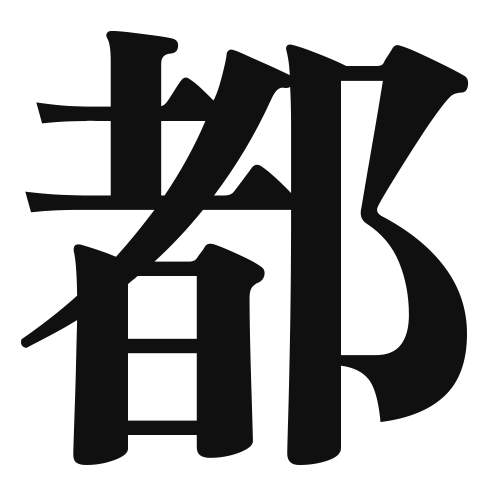1. Overview of Meaning
The kanji “都” (pronounced “to” or “miyako”) primarily means “capital” or “metropolis.” It refers to a large city that serves as the center of government or culture in a region.
2. Formation and Radical
Formation of the Kanji: The kanji “都” is a combination of two components: the radical “邑” (meaning “village” or “town”) and the phonetic component “土” (meaning “earth” or “ground”). This combination suggests a place where people gather, indicating a significant urban area.
Radical: The radical of “都” is “邑,” which is often associated with places or settlements.
3. Examples of Usage
Common Words and Phrases:
- 東京都 (Tōkyō-to) – Tokyo Metropolis
- 都心 (toshin) – city center
Example Sentences in Daily Conversation:
- 「私は東京に住んでいます。」(Watashi wa Tōkyō ni sundeimasu.) – “I live in Tokyo.”
- 「都は賑やかです。」(Miyako wa nigiyaka desu.) – “The capital is lively.”
4. Synonyms and Antonyms
Similar Kanji:
- 「市」(shi) – city; refers to a smaller urban area compared to “都.”
- 「町」(machi) – town; indicates an even smaller settlement.
Antonyms:
- 「田舎」(inaka) – countryside; refers to rural areas, contrasting with the urban connotation of “都.”
5. Cultural and Historical Background
Relation to Japanese Culture: The concept of “都” is deeply rooted in Japanese history, as many historical capitals, such as Kyoto, played significant roles in the development of Japanese culture and governance.
Proverbs and Idioms:
- 「都は一日にして成らず」(Miyako wa ichinichi ni shite narazu) – “A capital is not built in a day,” emphasizing the time and effort required to develop a significant city.
